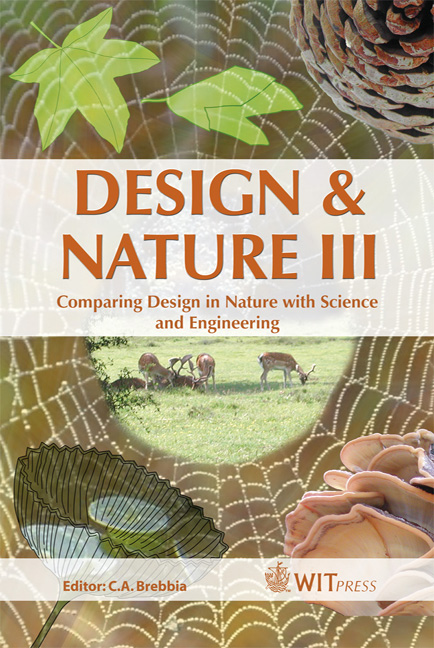Experimental Investigation Of Moist-air Transport Through Natural Materials Porous Media
Price
Free (open access)
Transaction
Volume
87
Pages
10
Published
2006
Size
415 kb
Paper DOI
10.2495/DN060211
Copyright
WIT Press
Author(s)
I. Conte & X. Peng
Abstract
Experimental investigations were conducted to characterize the moisture absorption of two different natural materials (coconut fibres and groundnut coquets). Two experimental samples were made: one with groundnut coquets (composed by void space and grain) and the other sample was made with coconut fibres (composed by void space and fibres). The samples were multi-layered sandwiches bounded on the top by ice while the bottom surface was exposed to the vapour with temperature close to 100oC. The percentage of water accumulation due to vapour absorption was calculated for each layer after a pre-set time of experiment (1h, 2h,…). The water content within both the coconut fibres and groundnut coquet increased with time. For the groundnut coquet sample the water was transferred mainly by diffusion through the solid; and in the coconut fibres sample with higher porosity, the water transferred by diffusion through void space was the most important. Since water is a better thermal medium, the thermal conductivity of the soaked insulation would increase and the insulating value of the material would be destroyed. Keywords: natural material, air and moisture transport, porous media. 1 Introduction Many natural materials (such as cork, coconut fibre…) are used in thermal insulation thanks to their relatively low thermal conductivity, low cost, harmless behaviour to the environment and human health. These materials are commonly used for insulation of low temperatures systems such as coldstore and living building because of their bad behaviour under high temperatures. However, one
Keywords
natural material, air and moisture transport, porous media.





